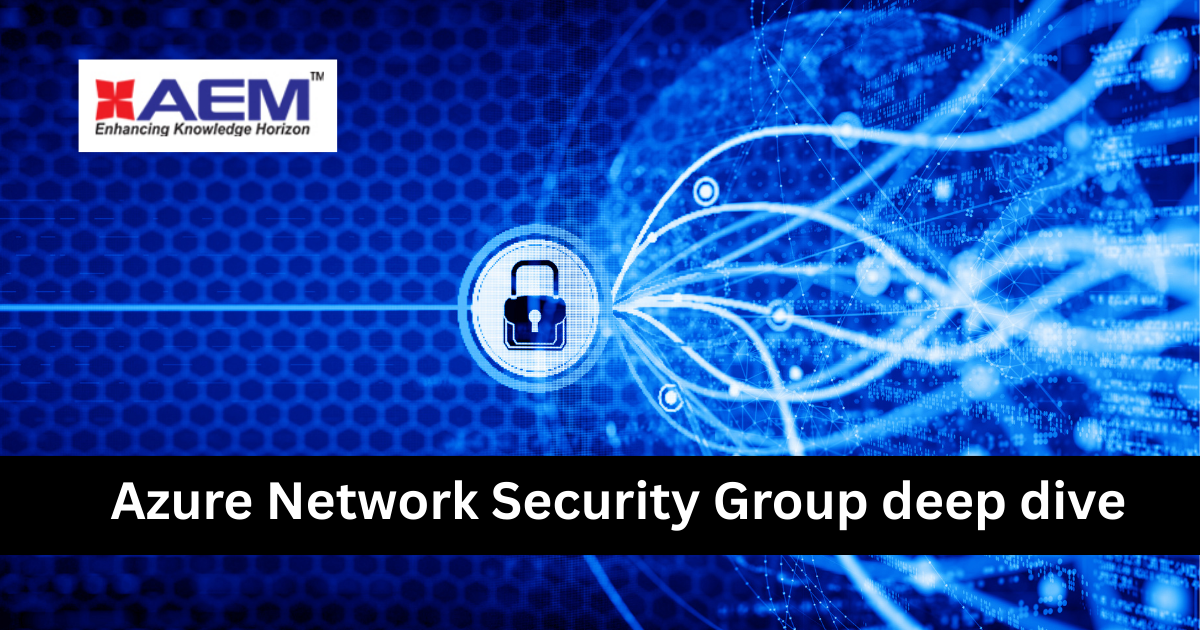Mastering Azure Network Security Groups (NSGs): A Complete Guide for Azure Administrators
Azure Network Security Group deep dive
In the modern cloud security landscape, safeguarding your Azure environments requires more than just deploying virtual machines and services. One of the most fundamental tools at an Azure Administrator’s disposal is the Network Security Group (NSG). NSGs act as gatekeepers, controlling inbound and outbound traffic to Azure resources and forming a critical part of a layered security strategy.
In this article, we’ll dive deep into NSGs—covering their architecture, features, management best practices, and real-world use cases—so that you, as an Azure Administrator, can deploy them effectively to secure your environments.
Understanding Azure Network Security Groups
At their core, Network Security Groups are collections of rules that determine whether network traffic should be allowed or denied. They function much like an Access Control List in traditional networking—but are designed for the elasticity and dynamic nature of Azure.
Key characteristics include:
- Stateful design: If you allow inbound traffic, return outbound traffic is automatically permitted.
- Flexible scope: You can attach NSGs to entire subnets or directly to individual NICs (Network Interface Cards) of a virtual machine.
- Granular control: Rules can be based on IP, port, protocol, and even logical groupings like Application Security Groups.
NSG Architecture and Core Concepts
Microsoft Azure evaluates NSG rules using a 5-tuple model:
- Source IP address
- Source port
- Destination IP address
- Destination port
- Protocol (TCP, UDP, ICMP, etc.)
Rules consist of properties such as name, priority (100–4096), source/destination criteria, protocol, direction (inbound/outbound), and action (allow/deny). Traffic is evaluated in ascending order of priority, stopping at the first match.
Every NSG also contains default rules:
- Allow traffic within the same Virtual Network
- Allow Azure load balancer probes
- Deny all other inbound and outbound traffic by default
These defaults cannot be removed but can be overridden with custom rules of higher priority.
Where to Deploy NSGs
There are two main deployment levels for NSGs:
- Subnet-level – Controls access for all resources in that subnet, ideal for broad policy enforcement across tiers.
- NIC-level – Grants policy control per resource (e.g., individual VM), enabling fine-grained security.
Important to note: If both subnet and NIC NSGs are applied, the traffic must be allowed in both for it to pass.
Key Functional Features
Application Security Groups (ASGs)
ASGs allow administrators to group machines logically (such as “WebServers” or “AppServers”) and apply NSG rules to the group rather than individual resources. This improves scalability for environments with dynamic infrastructure.
Service Tags
Instead of managing IP ranges, service tags let you use predefined labels like Internet, VirtualNetwork, or AzureLoadBalancer to target Azure services in your NSG rules.
Monitoring Integration
Paired with Azure Monitor and Network Watcher, NSGs can provide traffic analytics, security monitoring, and troubleshooting capabilities.
Managing NSGs: Tools and Best Practices
NSGs can be created and updated via:
- Azure Portal – user-friendly, GUI-based.
- Azure CLI or PowerShell – for automation and repeatable scripts.
- Infrastructure-as-Code with ARM templates or Bicep – ensuring consistency across environments.
Best practices include:
- Start with a deny-all baseline and only open what’s needed.
- Name rules descriptively for easy identification.
- Use service tags and ASGs to simplify management.
- Maintain separate NSGs per workload to avoid overly complex rule sets.
Real-World Use Cases
1. Securing Web Applications
Allow inbound HTTP/HTTPS (80/443) while blocking all other inbound internet traffic. Limit outbound connectivity to required external APIs only.
2. Multi-Tier Application Isolation
- Front-end subnet NSG: Internet access allowed for ports 80/443.
- Application subnet NSG: Only accepts traffic from the front-end subnet.
- Database subnet NSG: Only accessible from the application tier, no internet access.
3. Environment Isolation
Separate development, test, and production workloads into different subnets, each protected by unique NSGs prohibiting cross-environment traffic unless explicitly authorized.
4. Hybrid Cloud Security
Restrict access to management ports (RDP, SSH) only from on-premises IP addresses via site-to-site VPNs.
5. Zero Trust Boundary Enforcement
Block all risky ports and unnecessary protocols across the environment, minimizing the attack surface.
Advanced Security and Governance
NSGs and Zero Trust
Adopt a least-privilege networking model—allow only what’s necessary, backed by policy-based enforcement using Azure Policy and Virtual Network Manager.
Logging and Flow Analysis
While traditional NSG Flow Logs are being retired, similar analytics can be performed using virtual network traffic analytics solutions to identify patterns, detect anomalies, and strengthen compliance.
Infrastructure-as-Code Automation
Deploying NSGs through templates or scripts ensures repeatable, audited changes while integrating security into DevOps pipelines.
Limitations to Keep in Mind
While NSGs are powerful, they operate only at the network (Layer 3) and transport (Layer 4) levels. They do not inspect application layer content or detect threats directly—making them best paired with tools like Azure Firewall, which can handle deep packet inspection (Layer 7) and more complex rule sets.
NSG vs Azure Firewall
| Feature | NSG | Azure Firewall |
|---|---|---|
| OSI Layer | L3 & L4 | L3–L7 |
| Function | Allow/Deny ACLs | Advanced filtering, L7 inspection |
| Cost | Free | Paid |
| Use Case | Segmentation, access control | Centralized enterprise security |
Recommendation: Use NSGs for internal segmentation and Azure Firewall for advanced perimeter defense.
Troubleshooting NSGs
- Review effective rules in the portal to see which entries actually control the traffic.
- Check both subnet-level and NIC-level NSGs—traffic must be allowed in both.
- Use Network Watcher to inspect packet flows and pinpoint blocking rules.
- Monitor change logs to catch accidental rule misconfigurations.
Key Takeaways for Administrators
- Keep NSG rules minimal and specific.
- Regularly review and clean up unused or overly permissive rules.
- Use logical groupings like ASGs for scalability.
- Divide network resources into subnets to reduce the blast radius of potential compromise.
- Integrate logging and monitoring for proactive defense and auditing.
Final Thoughts
For Azure Administrators, mastering NSGs is non-negotiable. They are flexible, cost-effective, and essential to building strong network segmentation and safeguarding workloads in Azure. By following best practices, leveraging automation, and integrating with other Azure security tools, NSGs become a cornerstone of your cloud defense, ensuring your environment is both secure and adaptable to ever-changing business and security demands.

Cybersecurity Architect | Cloud-Native Defense | AI/ML Security | DevSecOps
With over 23 years of experience in cybersecurity, I specialize in building resilient, zero-trust digital ecosystems across multi-cloud (AWS, Azure, GCP) and Kubernetes (EKS, AKS, GKE) environments. My journey began in network security—firewalls, IDS/IPS—and expanded into Linux/Windows hardening, IAM, and DevSecOps automation using Terraform, GitLab CI/CD, and policy-as-code tools like OPA and Checkov.
Today, my focus is on securing AI/ML adoption through MLSecOps, protecting models from adversarial attacks with tools like Robust Intelligence and Microsoft Counterfit. I integrate AISecOps for threat detection (Darktrace, Microsoft Security Copilot) and automate incident response with forensics-driven workflows (Elastic SIEM, TheHive).
Whether it’s hardening cloud-native stacks, embedding security into CI/CD pipelines, or safeguarding AI systems, I bridge the gap between security and innovation—ensuring defense scales with speed.
Let’s connect and discuss the future of secure, intelligent infrastructure.
